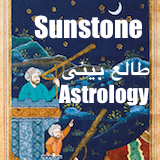By Hamidreza Azizi , Erwin van Veen
Clingendael
In short
— Iran's deteriorating economy is hit by new and tighter US sanction enforcement just as the Islamic Republic's primary mechanism of deterrence – its Axis of Resistance - is weak
— If Tehran refuses to negotiate with the US at sanctions gunpoint, it might invite a direct Israeli/US strike. If Tehran agrees to a nuclear deal, it surrenders a key security asset without reliable guarantees the US will be true to its word this time
— The Gulf Cooperation Council countries (GCC) understand that a cornered, nuclear or unstable Iran may be even more dangerous than an expansionist Iran. Such insight might yet provide a way out of the current zero-sum game
Editors' introduction
In September 2022, the death of Mahsa Jina Amini marked a major turning point for Iran. The event sparked lengthy nationwide protests across socio-economic classes and population groups whose demands rapidly evolved from discarding controversial hijab regulations to calls for the overthrow the Islamic Republic. The Iranian government responded with repression, killing over 400 protesters in late 2022 and early 2023, according to human rights groups. The Clingendael blog series ‘Iran in transition‘ explores power dynamics in four critical dimensions that have shaped the country's transformation since: state-society relations, intra-elite dynamics, the economy, and foreign relations. This blog post takes stock of Iran's strategic situation in March 2025 as the country's foreign and economic policies are running out of road without an off-ramp in sight. Greater regional instability threatens if diplomacy does not shift gears.
Back to square one, but in a weaker position
Since Donald Trump's return to the White House in January 2025 Iran has faced a swift reinstatement of the US “maximum pressure” policy. It was formalized on February 4 via a National Security Presidential Memorandum targeting Iran's oil exports and trade. At the same time, President Trump expressed a willingness to engage in direct diplomacy with Tehran to resolve outstanding issues. Trump's dual approach – economic coercion paired with calls for diplomacy – puts Tehran in a bind: negotiate once more with a distrusted adversary or risk escalation. Supreme Leader Ayatollah Ali Khamenei's outright rejection of negotiations with the U.S. clashes with reformist President Masoud Pezeshkian's electoral promises of removing sanctions through diplomacy. Such absence of strategic unity exposes a regime that is torn between survival and ideology in a context of having been substantially weakened by joint Israeli and US operations.
Specifically, Iran's network of regional influence, the Axis of Resistance, lies fractured. The collapse of Bashar al-Assad in Syria in December 2024 moreover severed Lebanese Hezbollah's lifeline. The organization was already crippled by Israeli strikes and Hamas has come under renewed bombardment and ground assault. Israel's strikes on Iran's S-300 air defenses and ballistic missile production sites in October 2024 created new vulnerabilities that became more salient when Israeli Defense Minister Israel Katz stated in November 2024 that Iran's nuclear facilities were "more exposed than ever” to a military strike.
Domestically, Iran is also reeling. Enforcement of new and old sanctions will limit the country's main source of revenue: oil sales. Meanwhile, the inflation rate grew to 37.1 percent in March 2025 as the value of Iran's currency reached the record low of 1,000,000 rial to the dollar. Deteriorating economic conditions and the lack of prospect for sanctions removals creates a real possibility of social unrest. Previous unrests were met by coherent elites and security forces, but elite fractures are also deepening: reformists clash with hardliners and hardliners with ultra-hardliners over issues like enforcement of a new hijab law.
Regional security from Tehran's perspective
From Tehran's perspective, the current regional security landscape is a volatile mix of threats and limited strategic options. Israel's belligerence looms as an immediate danger. U.S. intelligence warns of a potential Israeli strike on nuclear sites like Natanz or Fordow by mid-2025. Meanwhile, the renewal of the US “maximum pressure” policy includes attempts to close Iran's supply and communication chains with its regional allies, which challenges Tehran's longstanding approach of indirect deterrence via “forward defense”. Together, these developments are trying to force Iran to choose between nuclear escalation (going for the bomb) or conceding on essential safeguards to Iran's national security.
Perhaps the only bright spot for Iran are its improving relations with the Arab states of the Persian Gulf, particularly Saudi Arabia. The Riyadh statement condemning Israel's attack on Iran in October 2024 together with Saudi Arabia's refusal to normalize relations with Israel without a clear path to the formation of a Palestinian state encouraged Iran. Furthermore, the Saudis are now even prepared to mediate between Tehran and Washington. Be that as it may, it is unclear to what extent Riyadh would be able to maintain neutrality if a war between Iran and the United States were to occur, or whether Iran would continue to refrain from targeting Saudi interests – or at least American interests in Saudi Arabia and other parts of the Gulf, in such an event.
At the same time, Iran's network of allies in the Axis of Resistance is at its weakest point in the past 20 years. Hezbollah has lost almost its entire old leadership cadre, a significant portion of its military infrastructure and some of its political influence in Lebanon. Although Hamas has proven to be resilient, it is under continuous Israeli military pressure and is no longer capable of coordinated military action beyond incidental hit-and-run attacks. Above all, the fall of Assad meant the collapse of a key geographical node of the Axis of Resistance network. Together with Prime Minister Sudani, Tehran had to request its Iraqi allies to suspend attacks against Israel and the United States to avoid a similar fate as that of other Axis members. This makes the Houthi the only Iranian ally that continue to engage in direct confrontation with Israel and the United States, but it is also facing a renewed American military campaign.
Tensions with Turkey add yet further complexity. Ankara's growing sway in Syria and Iraq, and its growing ambitions in the South Caucasus where Iran fears the establishment of the Zangezor Corridor, have increased Tehran's threat perception of Ankara. Even though Iran's Oil Minister confirmed a March 5 deal to transit Turkmen gas to Turkey, it is not clear how long economic pragmatism can be sustained as rivalry intensifies in a volatile regional security environment.
Meanwhile, the U.S. is also turning up the heat on Iraq. Washington revoked its waiver to Iraq that allowed it the importing of Iranian electricity on March 7. This all but ensures blackouts in Iraq by the summer, which may in turn destabilize the ruling Iraqi Shi'a coalition ahead of the October 2025 elections, which has strong ties with Iran. The U.S. has also increased pressure on Baghdad to dismantle the Popular Mobilization Forces (PMF), a coalition of predominantly Shia forces with strong ties to Iran. Although this is a more difficult aim to achieve, it may well make these groups more cautious in supporting Iran's broader anti-Israel and anti-U.S. agenda, at least in public and for the moment.
Oil exports under strain
In a bid to reduce Iran's oil exports to zero, U.S. sanctions targeted Oil Minister Mohsen Paknejad and Iran's “shadow fleet” on March 13, 2025. The original maximum pressure campaign, which began in 2018 and continued until the end of Trump's first presidential term in 2021, had a significant impact on limiting Iran's oil exports. Before the start of the campaign in May 2018, Iran's crude oil and condensate exports peaked at approximately 2.8 million barrels per day (bpd), the highest since at least 2013. The next year, exports reached their lowest point, falling below 400,000 bpd in some months.
The end of Trump's first presidential term did not mark the official conclusion of the maximum pressure campaign, but the Biden administration's enforcement of it was far more relaxed. This gave Tehran an opportunity to increase its oil exports and boost oil revenues. Although Iran has stopped publishing its oil export figures, estimates suggest that this figure is between 1.6 to 1.8 million barrels per day. However, the lasting effect of the maximum pressure campaign of the initial Trump-days has been a shift in Iran's oil exports to China. It is now practically the sole buyer of Iranian oil, which reduces profit margins and also creates a huge dependency on the part of Tehran.
With Beijing dictating terms and pricing, Iran's profits from increasing sales have hardly risen. According to some reports, China purchased Iranian crude oil in 2024 with a discount of $5 to $6 per barrel. Hamid Hosseini, the head of the Iranian Oil Products Exporters' Union, claims that the actual discount is $3 per barrel. Even this is significant as it translates into a monthly loss of $135 million if one assuming a monthly export figure of 1.5 million barrels a day.
Aware of this situation, Trump's renewed maximum pressure policy has focused specifically on China. Recent additional U.S. sanctions targeted Chinese entities involved in importing Iranian crude oil, such as Huaying Huizhou Daya Bay Petrochemical Terminal Storage and Luqing Petrochemical. Although the Chinese government has demanded that Washington refrains from interfering in Beijing's trade with Tehran, Iran's Chinese partners have nevertheless become more cautious. For example, Shandong Port Group, a major Chinese port operator implemented a ban on tankers sanctioned by the U.S. Treasury's Office of Foreign Assets Control (OFAC) from docking, unloading, or receiving services at its ports early January 2025. This decision affected vessels transporting oil from countries under U.S. sanctions, including Iran, Russia, and Venezuela. Although other Chinese ports offer alternatives, it complicates matters for Iranian crude exports.
Meanwhile, economic indicators in Iran itself had already turned bright orange, which new sanctions can only aggravate as noted in Bijan Khajehpour's recent contribution to this series. The International Monetary Fund (IMF) projects Iran's real GDP growth at 3.1% for 2025, lagging behind the regional average of 3.9%. The Iranian rial has depreciated sharply, trading at record lows in early 2025. Inflation has surged above 30%, diminishing purchasing power and driving up the cost of living. Diminishing oil revenues has also led the government to rely more and more on taxes to ensure the continuity of public expenses, which has heightened the potential for social discontent. According to Abdolnaser Hemmati, the Minister of Economy in the Masoud Pezeshkian administration who was recently impeached, 73% of the country's current expenses are now funded through taxation. “If the Tax Organization doesn't operate for even one day, we will not be able to pay government employees' salaries,” he stated.
Intra-elite fractures
Iran's elites are a fractured mosaic in early 2025 as economic despair and foreign policy crises amplify rifts between reformists, conservatives and (ultra-)hardliners. These dynamics, centered on figures like President Masoud Pezeshkian, the impeached Economy Minister Abdolnaser Hemmati and vice president Mohammad Javad Zarif, show a regime struggling to retain coherence in the face of sanctions and social volatility.
A primary fault line is economic management under sanctions. Hardliners were quick to echo Supreme Leader Ali Khamenei's February 7 stance that Iran's economy can thrive without U.S. negotiations. They blamed Hemmati for the rial's plunge from 600,000 to 850,000 to the dollar per USD in the weeks following. Yet, during parliamentary debate, Pezeshkian and Hemmati countered that recovery without lifting sanctions is impossible. President Pezeshkian, referring to Trump's order to reinstate maximum pressure, for instance stated: “With Trump's signature, a large number of our oil tankers and gas ships have been left stranded at sea, and we're left figuring out how to deliver the energy to its destination. Iraq, Turkey, and other countries indebted to Iran are not repaying their debts.” Hemmati's impeachment by parliament (182-82 vote) not only deepened the divide about the question under which conditions Iran's economy can get by, its aftermath also saw the rial tumble further to 1,000,000 to the dollar. Pezeshkian, bowing to Khamenei's ban on talks, has reluctantly aligned with the former's “resistance economy” since, but his reformist base, including allies like ex-President Hassan Rouhani, insists that sanctions relief via dialogue is essential. The clash between reformists and hardliners is evident.
Zarif's resignation on March 2, catalyzed by hardline pressure from figures like judiciary chief Gholamhossein Mohseni-Ejei, marks another fracture. His exit underscores foreign policy tensions as it is tied to the nuclear deal (JCPOA) that was a sanctions-lifting triumph in 2015 but became a hardliner scapegoat after Trump's withdrawal in 2018. Ultra-hardliners, like the Stability Front's Morteza Aqa-Tehrani, vilify Zarif's Western outreach, accusing him of treason, while moderates lament losing a diplomatic bridge just as Trump's renewed sanctions bite.
Social policy, notably the hijab law, deepens elite discord. Ratified by parliament in 2024, its enforcement is stalled in the Supreme National Security Council (SNSC) in reflection of Pezeshkian's fear that it risks unrest akin to 2022's Mahsa Amini protests. Ultra-hardliners, including Saeed Jalili and 209 MPs who petitioned Speaker Mohammad Baqer Ghalibaf on March 4, demand implementation on grounds of ideological purity. Ghalibaf, a pragmatic hardliner, wavers. Khorasan daily, a paper close to Ghalibaf, warned of “social outrage” should implementation proceed, which highlights a rift with the ultra-hardliners of the Stability Front.
In an unprecedented move, some ultra-hardline members of parliament have organized street protests to demand enforcement of the hijab law. Critics warn that normalizing street protests could pave the way for a new wave of demonstrations against the government. This seems quite plausible, as people continue to seize every opportunity to express their dissatisfaction with the authorities. As a latest example, public celebrations in various Iranian cities marking Nowruz and the Iranian New Year included chants against the government. There is growing concern in some Iranian government circles that increasing intra-elite tensions, combined with deteriorating economic conditions, can trigger public unrest.
Zooming out
At the strategic level, the problem for Iran is that the US and Israel are playing a zero-sum game in which there are no attractive outcomes for Tehran. Both countries essentially offer Tehran a choice between accepting a form of nuclear surrender or facing military attack. The fact that Israel developed its own nuclear weapons in the same clandestine way as Iran conducts its nuclear program today, makes this approach even more galling. Both choices are unpalatable to Tehran and both bode ill for regional stability.
Enforced compromise comes with zero assurances and even less confidence that it will actually safeguard Iran's regime from future forms of US or Israeli pressure. President Trump's withdrawal from the nuclear deal that President Obama concluded demonstrates how this is not an abstract concern. In turn, it suggests that if Tehran accepts a negotiated nuclear surrender of sorts, resentment among key segments of Iran's ruling elites will be strong, compliance reluctant and trouble will likely store up for the future. Also, there are no US or Israeli concessions on the table that can make a deal more attractive, such as a US withdrawal from Iraq, an Israeli withdrawal from south Lebanon or a relaxation of present limitations on the area's reconstruction.
Alternatively, should Tehran chose to face military strikes, a nuclear Iran is a nearly guaranteed result given the advanced level of its nuclear program. This will set the Middle East on a more direct path of instability that also includes the risk of major oil price increases, closure of the Strait of Hormuz to maritime traffic and retaliatory strikes on Israeli and US assets via the remaining capabilities of Hezbollah, Iraqi resistance groups, the Houthi and the IRGC itself. A major intervening variable to consider in the second scenario is a domestic uprising in Iran that topples the regime. While populations have a habit of rallying around the flag in times of war, such an event cannot be wholly excluded given the many protests against Iran's current regime in the past decade. Should this happen, i.e. a combination of international war and domestic instability, chaos is bound to engulf Iran but it is only a matter of time before it spreads through the region. One only has to look at Iraq post-2003 or Syria today to imagine the possibilities.
While the scenario of war plus domestic chaos may look particularly good from an Israeli perspective, if the past is any guide to the future it will merely create the next set of security problems while impoverishing the Levant and Iran even further, as well as threatening to upstage the economic diversification and modernization initiatives of the Arab states on the Persian Gulf. Hezbollah emerged from the Israeli invasion of Lebanon, Iran's Islamic regime entrenched itself during the Iran-Iraq war, Hamas is a product of Israel's occupation and both Islamic State as well as Iran-linked armed groups in Iraq largely result from the US invasion. In brief, the use of military means to realize particular objectives is likely to have security consequences in other domains that often cannot be assessed in advance.
Israel's political leadership may see a once-in-a-lifetime opportunity to reshape the political order of the Middle East, which is code speak for eliminating the perceived threat from Iran and ensuring Israel-US-Saudi-Emirati dominance of the region, but Israel itself is also on a slow-motion train crash due to its internal polarization, acceleration of annexation and international censure, which makes extension of the Abraham Accords impossible for the near future. In Washington, some MAGA advocates may be inclined to extent their unconditional support for Israel to facilitating a strike on Iran, but any war with Tehran is guaranteed to prevent a shift in focus and a concentration of energies on China, which is another MAGA priority.
The GCC countries understand this set of predicaments better than anyone else since it is also their future development that is on the line, at least in part. They have come to realize that a cornered or unstable Iran may be even more dangerous than an expansionist Iran. It is reflections such as these that can form a sounder basis for diplomatic initiatives leading out of the current conundrum before it is too late.










Comments